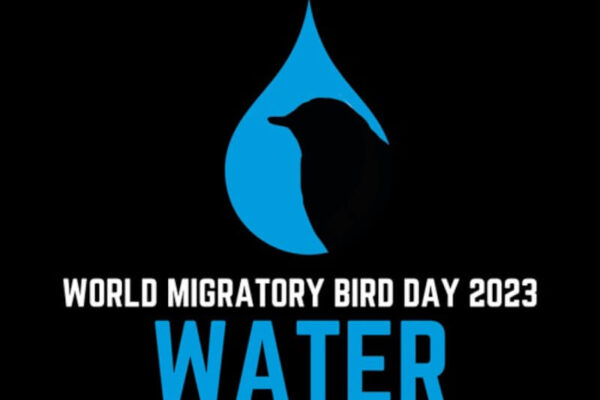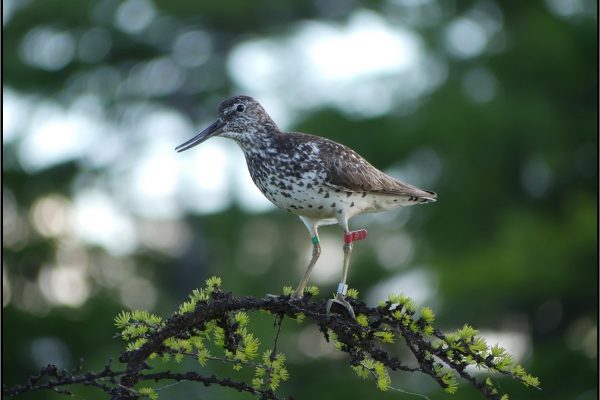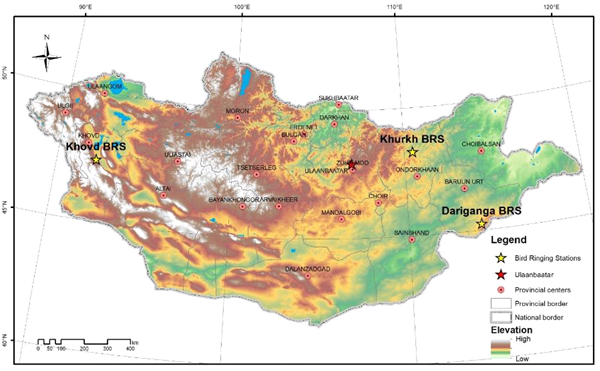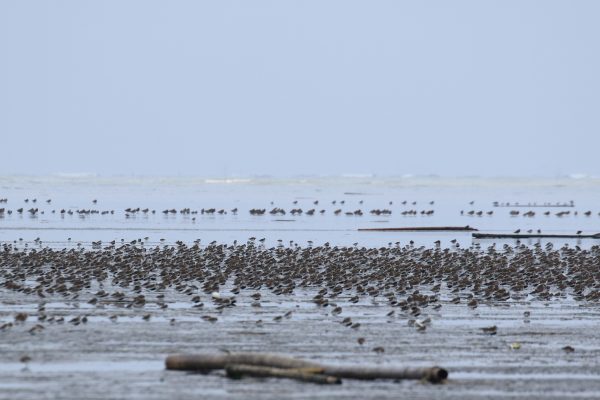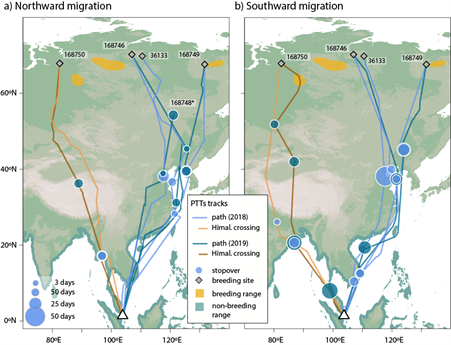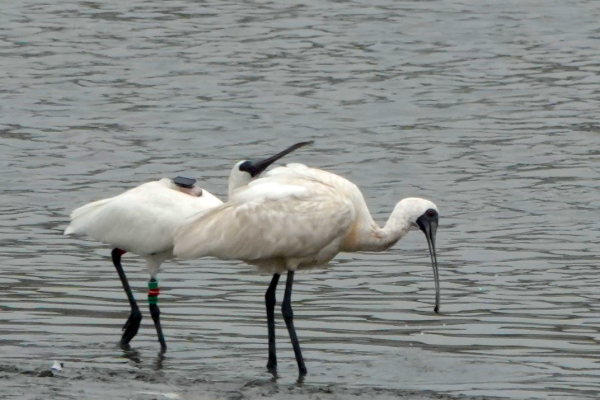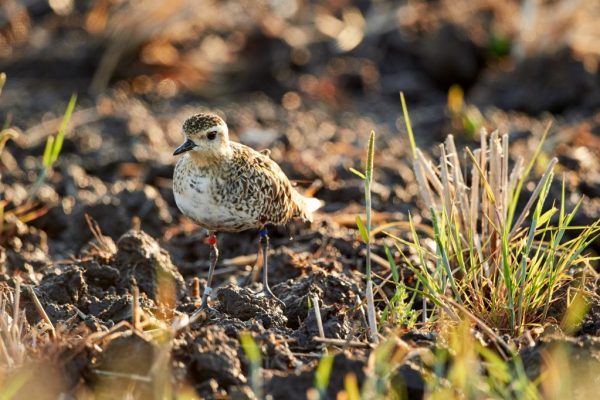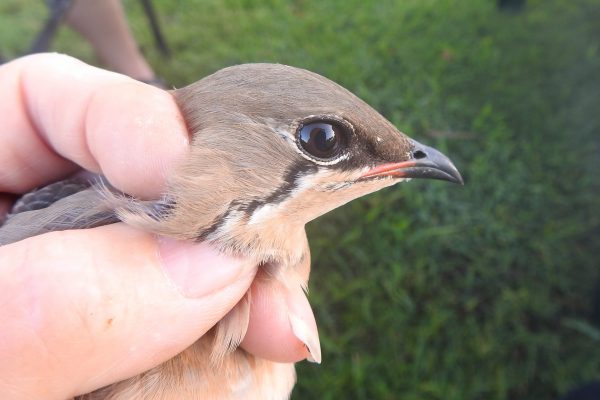-
Revealing migration of an unknown EAAF waterbird: The Wood Snipe
EAAFP Small Grant Fund Project by Xiaotong Ren, Peking University Shen Zhang, Shanshui Conservation Center On the remote alpine meadows of Pingwu County, Mianyang, Sichuan, China, there is a mysterious bird species that even locals rarely have a chance to see. Some of the villagers who often go to the alpine meadow said: “The call and flight of 'mud driller' (the name for Wood Snipe by local people, because it usually feeds on the ground) could be heard nearby when we stayed in huts at night. Sometimes, the sound of its flight is very strange, like there are little bells on its body, and it ‘po-po-po’ falls to the ground.” This is the Wood Snipe (Gallinago nemoricola, Figure 1). Snipes (Gallinago spp.) are a very special group of shorebirds: unlike most "typical" shorebirds that prefer to live on muddy or sandy riverbanks and beaches, snipes tend to live in concealed wetland vegetation. The Wood Snipe is an even more distinctive species among snipes. According to historical specimen collections and birdwatching records, they appear in tropical forests near South Asia and Southeast Asia in winter but breeds in alpine meadows of the Himalayas and Hengduan Mountains in summer. Figure 1. Wood Snipe at Pingwu County ©Tong Mu The mystery of Wood Snipes is largely due to the difficulty in reaching alpine meadows, combined with their secretive behavior. Basic information about the species, such as population size, complete distribution range, habitat preferences, diet, and behavior, is extremely scarce. Prior to our project, the only modern research conducted on this species was a population survey project in Nepal. Current knowledge of the species is mostly based on piecing together various historical records and sporadic birdwatching records. While we know almost nothing about basic aspects of Wood Snipes, they have already been listed as Vulnerable in the IUCN Red List, with a declining population estimated at only 2,500-9,999 individuals globally. As the Chinese proverb goes, "the beginning is always the hardest," our fieldwork started in the midst of great unknowns. Based on historical records, interviews with local residents, and valuable information from Mr. Wang of the Mianyang Birdwatching Society, we speculated that the Wood Snipes would appear in early May at their breeding ground in Pingwu County. Our advance team gathered to conduct a final recce in late April 2021 before the formal field work started. However, to everyone's surprise, the Wood Snipes had arrived before us, even though it was still snowing heavily on the mountain (Figure 2). Just as the locals had said, we didn't spot any of them until nightfall when we heard their flying and singing near our shelters. The first batch of team members quickly assembled and departed on April 30th, only several days after the recce, rushing into the formal field work stage. Figure 2: Heavy snow suddenly falls when we were searching for Wood Snipes. The snowy weather at our study area could last until the beginning of June From May 1st, we started our 2-month fieldwork on alpine meadow living at a simple and crude camp (3400m in elevation, Figure 3) without electricity and stable mobile phone signal but surrounded by Wood Snipe display every sunrise and sunset. Our objective was to investigate the population size and distribution of Wood Snipes and characterize the habitats and threats to Wood Snipes at our study area and to identify the migratory route and wintering grounds of the Wood Snipe population that breeds in the Hengduan Mountains. We conducted population size and distribution survey, preliminary observation and description of breeding biology, call survey, individual capture and banding, survey for habitat characteristics and food resource. Figure 3: Camp site in the field We recorded a total of 123 Wood Snipe occurrence sites during the field survey in 2021. We estimated there were 9 home ranges in the entire study area, each representing 1 - 2 adult individuals. We also found that across the entire alpine meadow which seemed identical to us ranging from about 3400 - 3750 m, Wood Snipes preferred lower elevation (<3600m) and median level of soil moisture. They also had a higher probability of occurrence at sites with more potential food resources (soil macroinvertebrates). We also captured and banded 7 individual Wood Snipes and successfully fitted tracking devices to them while ensuring that the weight of each tracking device was less than 5% of the corresponding individual's body weight (Figure 4). Since the tracking devices were unstable, we only had the southward migration routes for two individuals and northward migration route for one individual (Figure 5). This was the first time that the migration of this cryptic species had been revealed. Figure 4: Wood Snipe individual fitted with satellite transmitter Figure 5: Map of Wood Snipe tracking in non-breeding season. Individuals marked by colors: orange indicates south-ward migration of one individual, dark blue and light blue indicate south-ward and north-ward migration of another individual respectively Our work for Wood Snipe in 2021 is just the beginning for the study and conservation of this species and much remains to be done in the future. You could find more details in our report and future publications. Please contact us if you are interested in our project or have any questions about it. The project was funded through the 2021 EAAFP WG/TF Small Grant Fund. View the report, Click here.
Continue reading -
World Migratory Bird Day 2023 to Focus on Water
World Migratory Bird Day 2023 campaign will focus on the topic of water and its importance for migratory birds. Water is fundamental…
Continue reading -
Advancing research on Nordmann’s Greenshanks and Common Redshanks in Schaste Bay
Article prepared by Vladimir Pronkevich1, Konstantin Maslovsky2, and Philipp Maleko3,4 During the summer of 2021, we continued studying the breeding ecology of Endangered Nordmann’s Greenshank (Tringa guttifer) and…
Continue reading -
EAAF Shorebird Tracking Group 1st Webinar
The EAAF Shorebird Tracking Group, established in 2021 following the 1st East Asian-Australasian Flyway Shorebird Science Meeting in 2020, held the first webinar on 13th…
Continue reading -
Mongolian Bird Ringing Program – 2020 Annual Report
In Mongolia, bird ringing activities started relatively recently. The first stationary bird ringing scheme was established in 2015 by Wildlife Science and Conservation Center of Mongolia (WSCC) at the…
Continue reading -
The southern Jiangsu coast is an important ‘dressing room’ for Spoon-billed Sandpipers and Nordmann’s Greenshanks
If you are lucky to see the Critically Endangered Spoon-billed Sandpipers or Endangered Nordmann’s Greenshanks on the southern Jiangsu coast, they are probably busy gobbling up seafood on the…
Continue reading -
Researchers discover how migratory shorebirds travelling from Southeast Asia cross the Himalayas to breeding grounds in China and Russia
Singapore revealed to be at the intersection of the Central Asian Flyway and East Asian-Australasian Flyway These new insights give researchers, policymakers and conservation biologists a more robust…
Continue reading -
Collaboration on tracking Endangered Black-faced Spoonbill
The Endangered Black-faced Spoonbill is one of the key species in the East Asian -Australasian Flyway Partnership. The conservation of this globally threatened species had been fostering collaboration and…
Continue reading -
Tracking the Pacific Golden Plover from New Zealand
The members of the Pukorokoro Miranda Naturalists’ Trust (PMNT) have been concerned for some time at the declining numbers of Pacific Golden Plover that appear in New Zealand each…
Continue reading -
AWSG North-west Australia Satellite Tracking Project Update (Part 2 & 3)
This is the 2nd and 3rd update on the AWSG satellite tracking project. The highlight is again the performance of the Oriental Pratincoles. All four have now left Australia…
Continue reading


